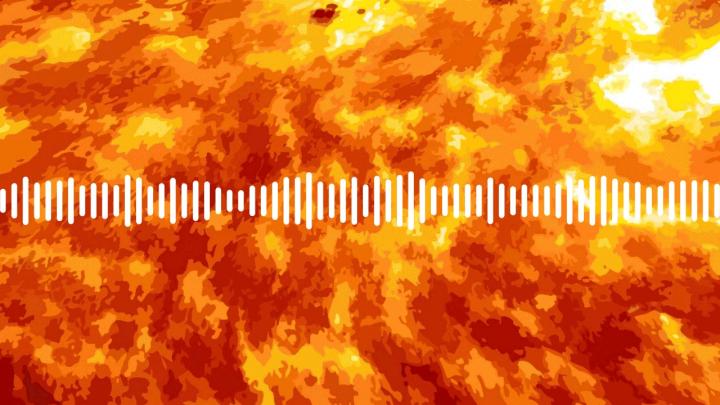Sounds of the Sun

An illustration of a sunspot inspired by imagery from NASA's Solar Dynamics Observatory (SDO), with a stylized sound wave superimposed. View animation: https://svs.gsfc.nasa.gov/vis/a010000/a013000/a013011/sunspot.gif Credit: NASA's Goddard Space Flight Center
This sound helps scientists study what can't be observed with the naked eye.
“Waves are traveling and bouncing around inside the Sun, and if your eyes were sensitive enough they could actually see this,” said Alex Young, associate director for science in the Heliophysics Science Division at NASA's Goddard Space Flight Center in Greenbelt, Maryland.
Data from SOHO, sonified by the Stanford Experimental Physics Lab, captures the Sun's natural vibrations and provides scientists with a concrete representation of its dynamic movements.
“We don't have straightforward ways to look inside the Sun. We don't have a microscope to zoom inside the Sun,” Young said. “So using a star or the Sun's vibrations allows us to see inside of it.”
These vibrations allow scientists to study a range of complex motions inside the Sun, from solar flares to coronal mass ejections.
“We can see huge rivers of solar material flowing around. We are finally starting to understand the layers of the Sun and the complexity,” Young said. “That simple sound is giving us a probe inside of a star. I think that's a pretty cool thing.”
The sounds of the Sun are on display at the NASA Goddard Visitor Center in Greenbelt, Maryland. An immersive art installation, called Solarium, uses vivid imagery and sonification to transport listeners to the heart of our solar system.
Media Contact
More Information:
https://www.nasa.gov/feature/goddard/2018/sounds-of-the-sunAll latest news from the category: Physics and Astronomy
This area deals with the fundamental laws and building blocks of nature and how they interact, the properties and the behavior of matter, and research into space and time and their structures.
innovations-report provides in-depth reports and articles on subjects such as astrophysics, laser technologies, nuclear, quantum, particle and solid-state physics, nanotechnologies, planetary research and findings (Mars, Venus) and developments related to the Hubble Telescope.
Newest articles

Properties of new materials for microchips
… can now be measured well. Reseachers of Delft University of Technology demonstrated measuring performance properties of ultrathin silicon membranes. Making ever smaller and more powerful chips requires new ultrathin…

Floating solar’s potential
… to support sustainable development by addressing climate, water, and energy goals holistically. A new study published this week in Nature Energy raises the potential for floating solar photovoltaics (FPV)…

Skyrmions move at record speeds
… a step towards the computing of the future. An international research team led by scientists from the CNRS1 has discovered that the magnetic nanobubbles2 known as skyrmions can be…





















